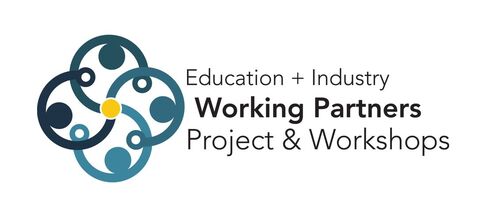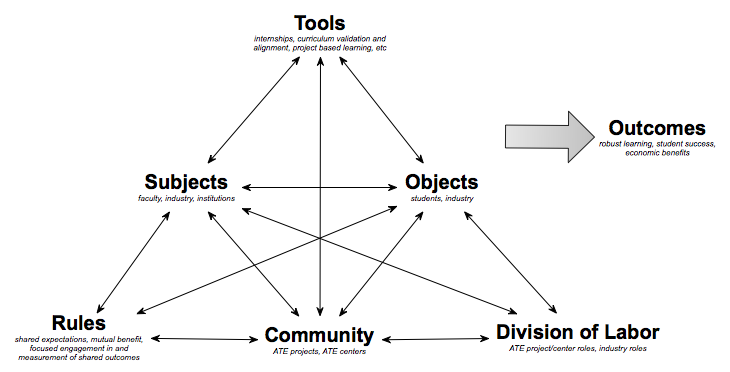Theoretical Framework
As a mechanism for identifying and characterizing community college / industry partnership models, Working Partners is using a framework called the Human Activity System (HAS) framework,, illustrated above.
Activity System theories, initially associated with the Moscow Institute of Psychology and built upon and extended by Scandinavian researchers such as Yrjö Engeström, seek to understand and articulate the various interdependencies and connections between people and objects involved in any human activity. The HAS model has been used extensively in Canada and Europe to document a variety of complex systems, primarily in health and medical organizations. Given the nature of partnerships and their multi-faceted connections and relationships, the Human Activity System model below has been adapted to showcase the various components in a general ATE/industry partnership.
This framework will provide context to the community, be used as a reference point in determining if each ATE activity or event type (e.g. advisory board, externship, etc.) should be considered as a model, and guide development of each partnership model and its defining components. While each partnership model may be unique, a given model will need to reflect a majority of the components of HAS in order to be considered.
Activity System theories, initially associated with the Moscow Institute of Psychology and built upon and extended by Scandinavian researchers such as Yrjö Engeström, seek to understand and articulate the various interdependencies and connections between people and objects involved in any human activity. The HAS model has been used extensively in Canada and Europe to document a variety of complex systems, primarily in health and medical organizations. Given the nature of partnerships and their multi-faceted connections and relationships, the Human Activity System model below has been adapted to showcase the various components in a general ATE/industry partnership.
This framework will provide context to the community, be used as a reference point in determining if each ATE activity or event type (e.g. advisory board, externship, etc.) should be considered as a model, and guide development of each partnership model and its defining components. While each partnership model may be unique, a given model will need to reflect a majority of the components of HAS in order to be considered.

